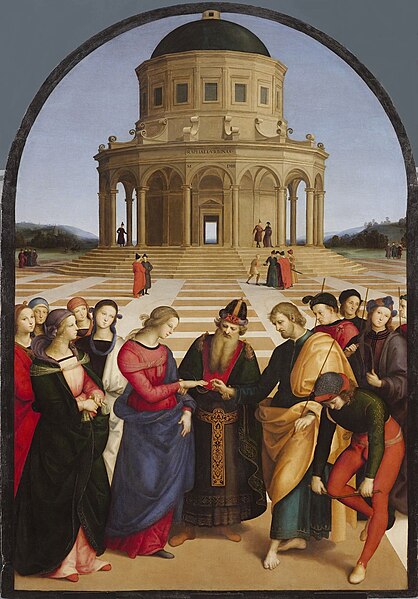Giotto di Bondone, known mononymously as Giotto and Latinised as Giottus, was an Italian painter and architect from Florence during the Late Middle Ages. He worked during the Gothic and Proto-Renaissance period. Giotto's contemporary, the banker and chronicler Giovanni Villani, wrote that Giotto was "the most sovereign master of painting in his time, who drew all his figures and their postures according to nature" and of his publicly recognized "talent and excellence". Giorgio Vasari described Giotto as making a decisive break from the prevalent Byzantine style and as initiating "the great art of painting as we know it today, introducing the technique of drawing accurately from life, which had been neglected for more than two hundred years".
Posthumous portrait of Giotto, made between 1490 and 1550
One of the Legend of St. Francis frescoes at Assisi, the authorship of which is disputed.
Saint Francis receiving the Stigmata.
The Crucifixion of Rimini
Italian Renaissance painting
Italian Renaissance painting is the painting of the period beginning in the late 13th century and flourishing from the early 15th to late 16th centuries, occurring in the Italian Peninsula, which was at that time divided into many political states, some independent but others controlled by external powers. The painters of Renaissance Italy, although often attached to particular courts and with loyalties to particular towns, nonetheless wandered the length and breadth of Italy, often occupying a diplomatic status and disseminating artistic and philosophical ideas.
Raphael: The Betrothal of the Virgin (1504), Pinacoteca di Brea, Milan.
Sandro Botticelli: The Birth of Venus for the Medici (1484–1485), Uffizi, Florence
Domenico Ghirlandaio, The Birth of the Virgin Mary, shows the introduction of patron's families into religious cycles.
Paolo Uccello, The Battle of San Romano, demonstrates the preoccupation with the development of linear perspective, in a secular subject








